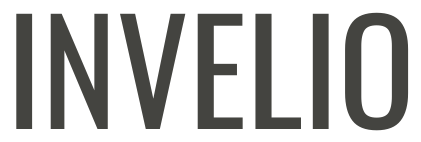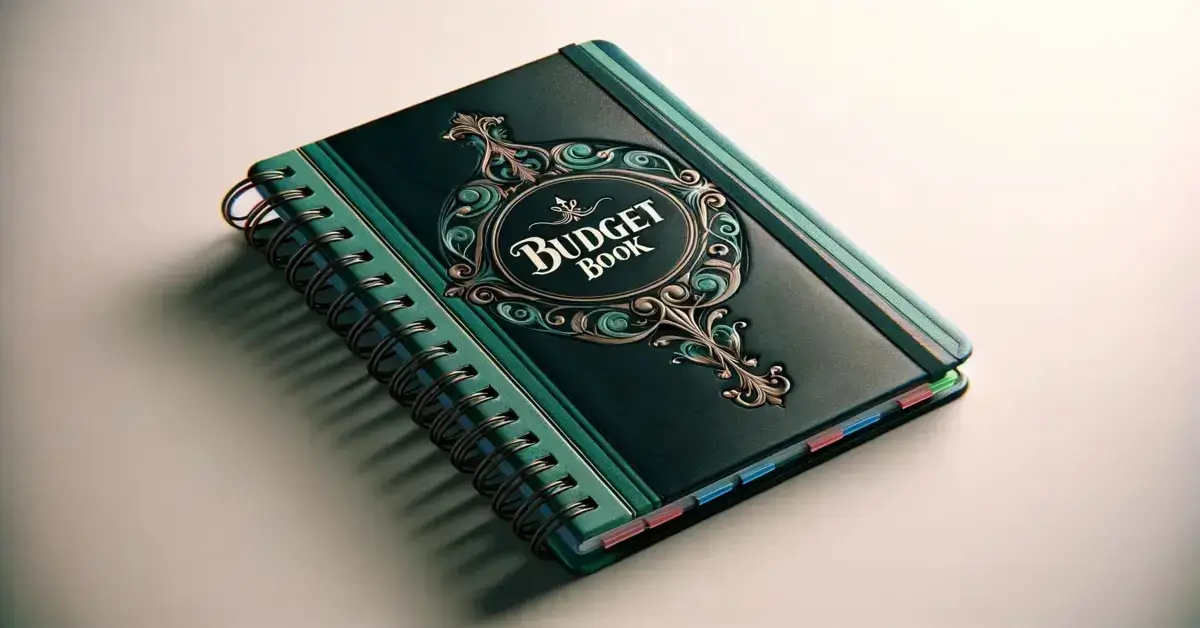Start mastering your finances with the perfect budget book, a crucial tool for tracking and optimizing your financial journey. This guide offers creative budget book ideas to make managing your money both effective and enjoyable. Find the ideal budget book that reflects your financial goals, from managing everyday expenses to saving for that special vacation.
Understanding Personal Finances
When I explore budget book ideas, I always emphasize that they’re more than just notebooks; they’re a roadmap to financial clarity. Let’s dive into why budgeting is the cornerstone of personal financial management.
Importance of Budgeting
Budgeting is an essential practice in personal finance management. It gives me a clear picture of where my money comes from and where it’s going. By detailing my income and expenses, I can prioritize my financial goals and allocate funds effectively. This is not just about monitoring where my paycheck goes, but it’s a strategic approach to ensure I’m spending less than I earn.
- Track and control spending: Seeing my monthly spending categorized helps me identify areas where I can cut back.
- Prepare for emergencies: Regularly setting aside a portion of my income into a savings account insulates me against unexpected expenses.
- Reduce debt: Applying structured payments towards clearing debt prevents it from becoming a long-term financial drain.
- Achieve financial goals: Whether it’s saving for a vacation or investing in retirement, a budget acts as my financial compass.
Proper budgeting can spell the difference between living paycheck to paycheck and establishing a solid foundation for saving money. My budget book is central to this process, as it’s where I document my financial journey, making informed decisions along the way. It simplifies complex financial situations and empowers me to take charge of my finances.
Creating a Budget Book
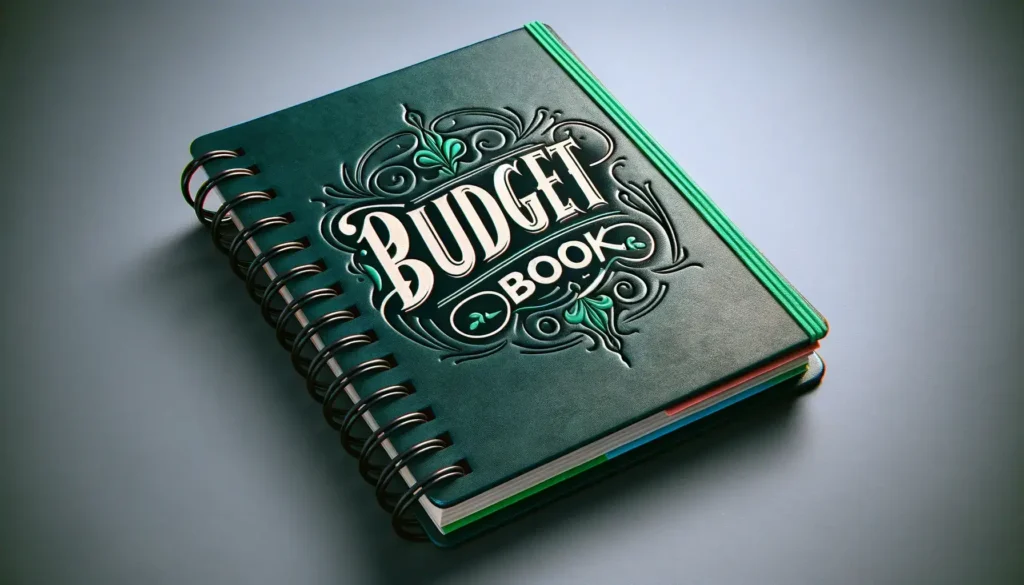
When I began exploring budget book ideas, I discovered that they’re more than just journals; they’re vital tools for financial management—carefully tailored to track expenses, income, and bills efficiently.
Choosing the Right Budget Book
Selecting the right budget book is a crucial step in taking control of my finances. I look for something sturdy and customizable because a budget book that suits my specific needs motivates me to stay committed to tracking my expenses. For example, if I travel frequently, I might pick a compact version that easily fits in my bag.
Customizing Your Budget Planner
My budget planner becomes uniquely mine when I customize it. I start by creating sections for different categories of spending, such as groceries, utilities, and entertainment. Each section gets a page where I can list projected expenses and actual spending. I may use color coding or stickers to make it visually appealing, which encourages regular use.
Tracking Income, Expenses and Bills
Keeping a meticulous record of my income, expenses, and bills is the backbone of a budget book. I lay out a monthly view to get a clear picture of my cash flow:
- Income: Here, I note down all my income streams, whether it’s my salary, freelance work, or any passive income sources.
- Expenses & Bills: I list all recurring costs, like rent or mortgage, and utilities. Then I track variable expenses like food and leisure activities, making sure to note every penny spent. This helps to quickly spot areas where I can cut back if necessary.
Enhancing Your Budget Book Ideas
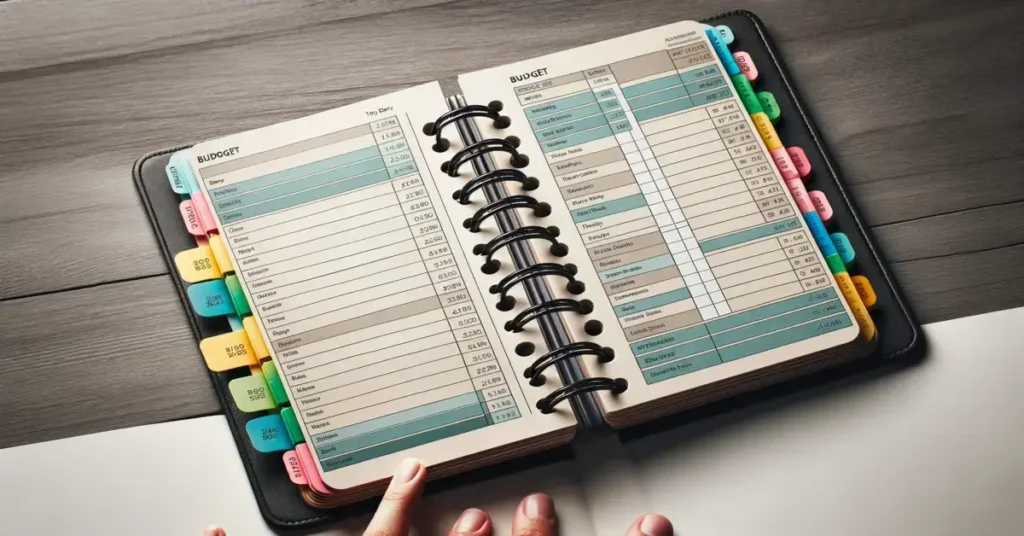
When I started applying creative budget book ideas, the entire process of managing finances became more engaging and personalized. Here’s how you can do the same.
Incorporating Stickers and Bookmarks
I found that using stickers has a dual purpose in my budget book – they not only make it visually appealing but also function as intuitive markers for important information. You can get budget stickers that are pre-made with categories like ‘Utilities’, ‘Groceries’, and ‘Savings’. They help me stay organized and I can quickly flip to a section without having to search. And let’s not underestimate the satisfaction of adding a ‘Paid’ sticker once a bill is settled.
For my daily entries, I use a simple bookmark. It’s usually something motivational that also serves as a quick access point to my current page. I recommend using sturdy bookmarks that can handle frequent use.
Utilizing Digital and Physical Coupons
I always keep an eye out for both digital and physical coupons that apply to my regular expenses. They’re like little victories in my budgeting journey. I dedicate a section in my budget book to organizing these coupons, which ensures I don’t overlook potential savings. I format this section with tables – one for physical coupons with columns for ‘Coupon’, ‘Value’, ‘Expiry Date’, and ‘Used’, and a similar one for digital coupon codes.
Adding Additional Budgeting Workbooks
In my experience, integrating additional budgeting workbooks can deepen the financial planning process. I look for ones like Budget Planner, which offers comprehensive templates and exercises to fine-tune my budget. It’s like a gym session for your finances – systematic and goal-oriented. These workbooks are essential for anyone serious about improving their financial literacy and control.
Budgeting for Different Lifestyles
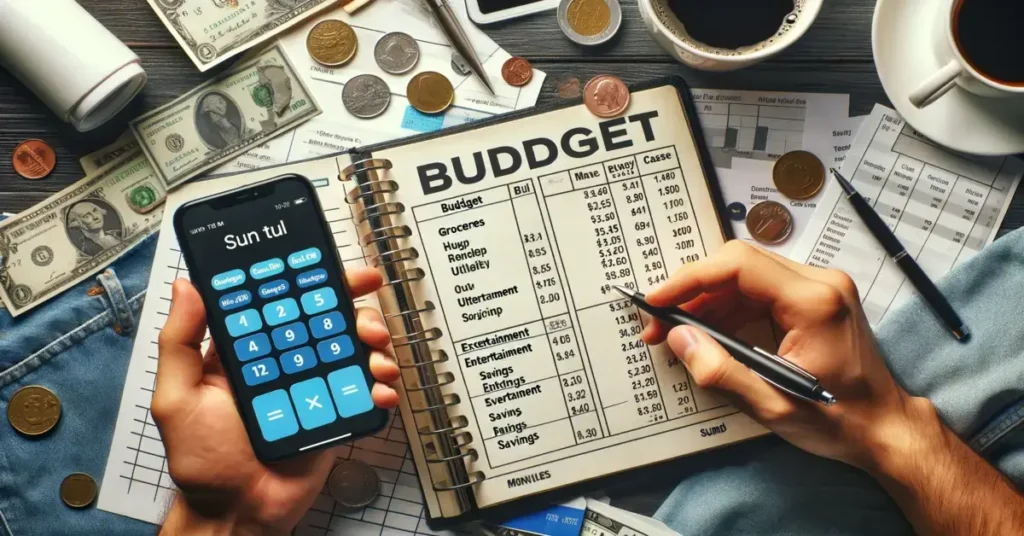
Budget book ideas can be versatile tools that accommodate everyone from busy families to energetic singles, and the budget-savvy student. Each lifestyle has unique financial needs, and a tailored approach to budgeting can help in managing those needs effectively.
Budgeting Book Ideas for Families
For families, budgeting often revolves around planning for groceries, education expenses, and family entertainment. I prefer using a categorical breakdown to ensure all needs are met while still allocating funds for savings. Here’s an example:
- Groceries: Allocate a set percentage of your income to groceries and track spending to stay within your limit.
- Education: Aside from tuition, include a section for school supplies and potential field trip costs.
- Entertainment: Dedicate a portion of your budget for family outings that allow everyone to unwind without breaking the bank.
Budgeting Book Ideas for Singles
Singles might focus more on balancing personal finances with social activities. I like to keep a section in my budget book for entertainment and dining out, making sure to track each expense. It’s important for singles to also set aside money for savings and investments. Here’s a simple breakdown:
- Finances: Monthly allocation for rent, utilities, and any personal debt should be your priority.
- Entertainment: Have a set entertainment budget to enjoy social engagements without compromising your financial goals.
Budgeting Book Ideas for Students
Students need to be extra mindful of their budgeting, especially with student loans on the horizon. It’s critical to track all expenses related to education and living costs, and I find that a detailed budget book serves as a great ally. Consider:
- Education: Include tuition fees, books, and supplies in your education category.
- Student Loans: A separate section to manage and prepare for future loan repayments can relieve stress down the line.
Strategies for Saving Money
When exploring budget book ideas, the goal is to maximize savings while effectively managing financial goals and expenses. Let me share some of the most effective strategies to help you save money efficiently.
Reducing Expenses
Eliminate Unnecessary Subscriptions: Regularly review your subscriptions and memberships, canceling anything that isn’t essential or doesn’t bring you value. Opting for generic brands over name brands can also offer significant cost savings without sacrificing quality.
Minimize Utility Bills: Simple home adjustments, like lowering the thermostat in winter and raising it in summer, can substantially reduce energy costs. Additionally, being mindful of water usage can lower monthly bills.
Setting Financial Goals
Short-Term Goals: Set achievable, short-term savings targets. This could cover an emergency fund or a specific item you wish to purchase. Tangible goals make saving more rewarding and motivate you to stick to your budget.
Long-Term Goals: These are your big-picture targets like retirement, buying a house, or funding education. By defining these, you can align your saving and investment strategies to ensure you’re on track to meet these critical milestones over time.
Choosing a Budget Method
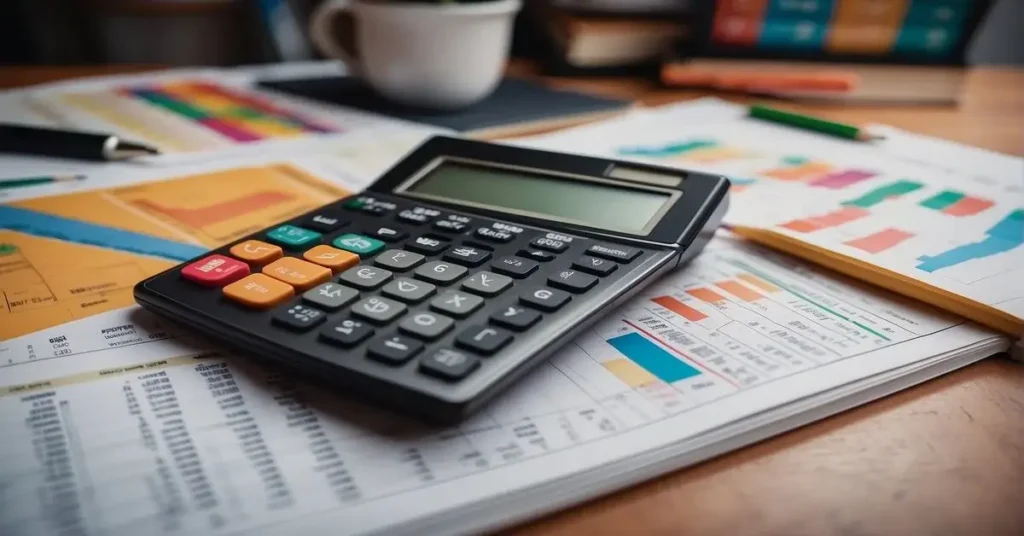
When I started looking into budget book ideas, it became clear that selecting the right budget method could drastically improve my financial plan. There are several popular methods, and choosing one depends on your cash flow and financial goals. Here are a few I considered:
The Envelope System: Popularized by Dave Ramsey, this method involves dividing cash into envelopes for different spending categories. When an envelope is empty, I stop spending in that category.
- Pros: Helps control overspending and visualize budget.
- Cons: Carrying cash can be risky, and it’s not suited for all types of expenses.
50/25/25 Rule: This is a simplified budgeting method where 50% of my income goes to needs, 25% to wants, and 25% to savings.
- Pros: Easy to follow and provides a balanced approach.
- Cons: May not be ideal for those with irregular income.
Zero-Based Budget: With this method, I give every dollar a job, ensuring my income minus expenses equals zero.
- Pros: Ensures complete allocation of funds and can help with debt repayment.
- Cons: Time-consuming to maintain and requires frequent adjustments.
Automated Budgeting: Technology can help me automate my budgeting process, tracking spending and helping me stick to my financial plan.
- Pros: Convenient and reduces manual effort.
- Cons: Potential security risks and may cost money for apps or services.
Here’s how I usually lay out my budget:
| Expense Category | Envelope System | 50/25/25 Allocation | Zero-Based Allocation |
|---|---|---|---|
| Housing | $800 | 50% Needs | All remaining income |
| Groceries | $300 | 50% Needs | Specific dollar amount |
| Entertainment | $100 | 25% Wants | Specific dollar amount |
| Savings | $200 | 25% Savings | Specific dollar amount |
Remember, the most effective budget is the one that works for you and adapts to your lifestyle!
Recommended Budgeting Resources
When looking for budget book ideas to gain control over your finances, it’s essential to have the right resources at your fingertips. I’ve put together some top picks for books and apps to help you on your journey to financial wellness.
Top Budgeting Books and Authors
- David Bach: Best known for “The Automatic Millionaire,” which emphasizes automating your finances.
- Avery Breyer: Author of “Smart Money Blueprint,” providing practical tips on budgeting and investing.
- Erik Wecks: Offers a straightforward approach in “The Total Money Makeover,” helping readers cultivate healthy financial habits.
- Dave Ramsey: His books, particularly “Financial Peace University,” offer strategies for debt reduction and financial freedom.
- Tiffany Aliche: Also known as ‘The Budgetnista,’ shares insightful advice in “The One Week Budget,” tailored for managing personal expenses and income.
- Jesse Mecham: The creator of You Need a Budget (YNAB), his book brings the same methodology to help you break the paycheck-to-paycheck cycle.
Useful Budgeting Apps and Tools
Apps:
- You Need a Budget (YNAB): Jesse Mecham’s app promotes proactive budget management.
- EveryDollar: Dave Ramsey’s budget tool is designed to allocate every dollar you earn.
Tools:
- Printable Budget Worksheets: These can help track expenses the old-fashioned way. Life and a Budget’s printable worksheets are quite popular for this purpose.
- Budget Planners: A physically tangible planner such as the Clever Fox Budget Planner offers a classic approach to budgeting.
Frequently Asked Questions
What should I put in my budget book?
In your budget book, include categories for both fixed and variable expenses. You will want to fill in crucial expenses first and test new categories for at least three budgeting periods. Tracking and evaluating your spending categories accurately is vital!
How do you create a budget book?
Creating a budget book involves summarizing daily expenses, tracking them against your income, and reviewing the cumulative costs by category at the end of the month. Budget Planner tools can guide you to create effective budgets with monthly planning spreads and additional productivity pages.
How do I make a DIY budget planner notebook?
To make a DIY budget planner, grab a notebook and create sections for your financial goals, monthly budgets, and expense tracking. Design your layout in a way that provides clarity into your finances, is easy to update regularly, and makes the tracking process sustainable in the long term
I hope you found some inspiration or useful tips in our article on ’budget book ideas’! If so, I’d love to hear your thoughts and ideas in the comments below! And if you’re looking for more insightful content, don’t hesitate to explore our other articles:
- The 30/30/40 Rule: 10 Best Tips to Start Budgeting
- Budgeting Questions: My Top 10 When Crafting My Budgets
- The 50/25/25 Rule Explained: Simplify Your Budget
- Fundamentals Of Financial Planning: Your Path To Financial Security
Your comments help us create better content for you. Happy reading!
